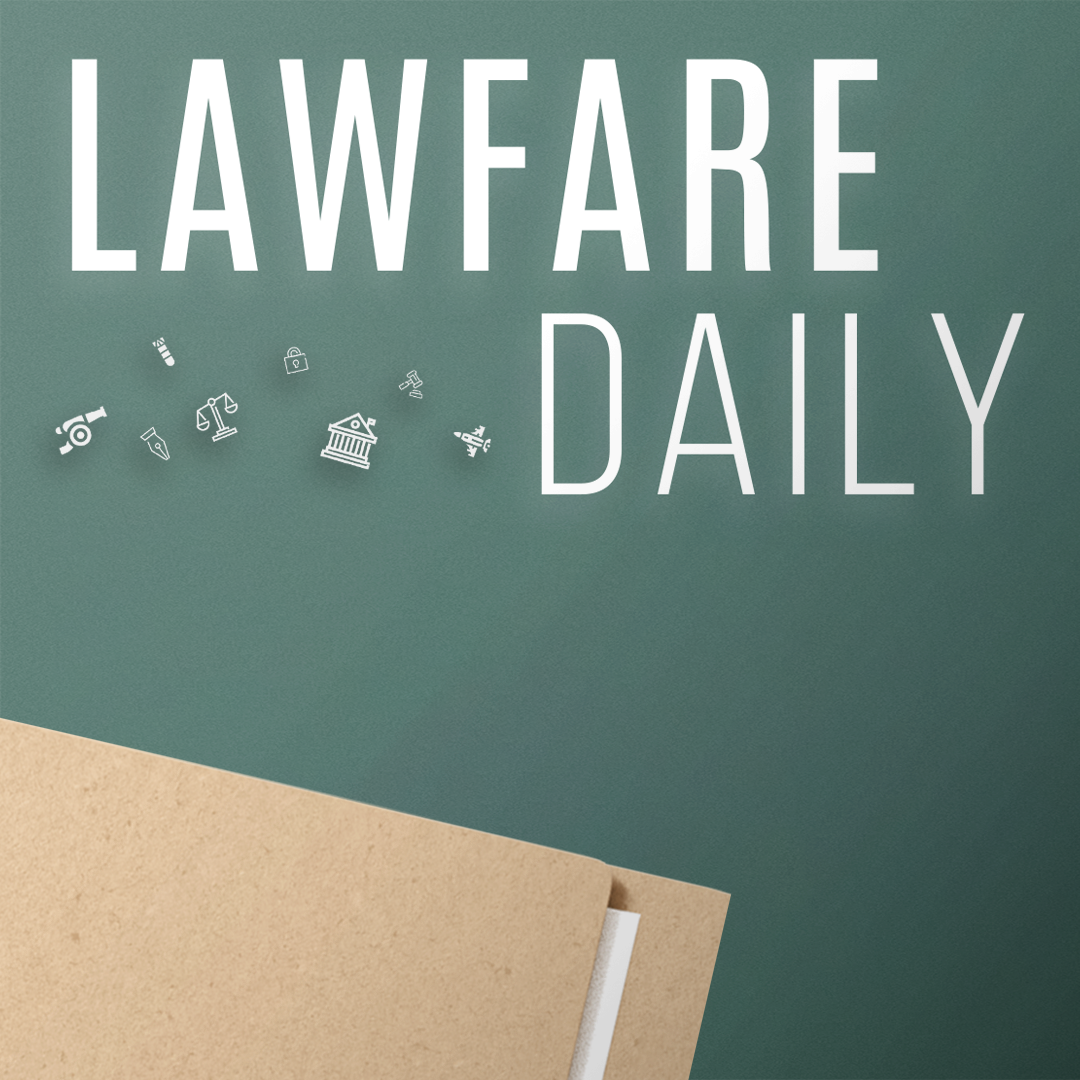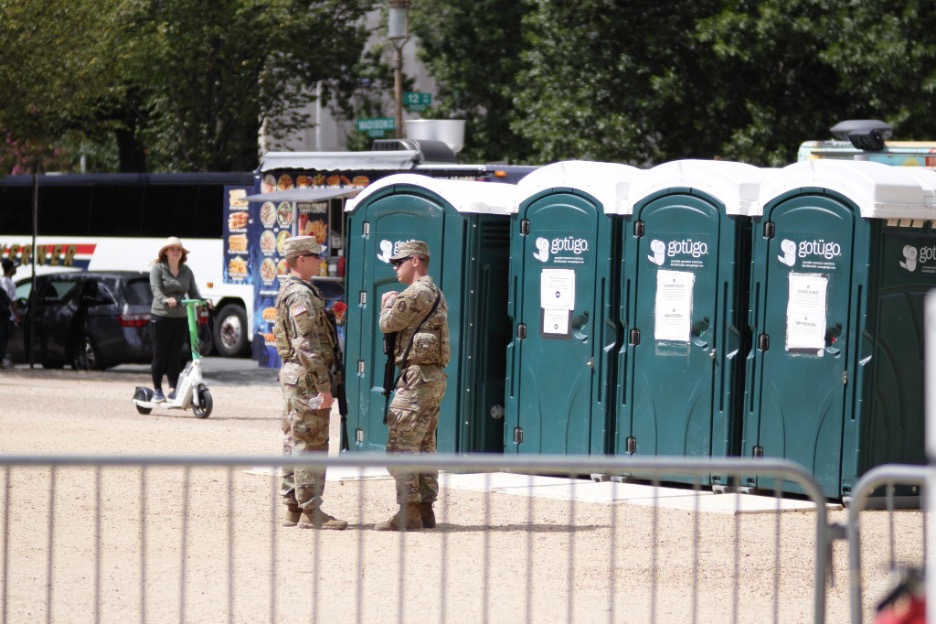The Situation: I’ll Wait and See on the Tariffs Case

Published by The Lawfare Institute
in Cooperation With

The Situation on Tuesday asked a seemingly simple question about the criminal case against former FBI Director James Comey for allegedly lying to Congress: “Where’s the Lie?”
On Wednesday, the Supreme Court held oral arguments over the president’s use of the International Emergency Economic Powers Act (IEEPA) to impose a range of tariffs on countries all over the world.
The argument, as you’ve probably read elsewhere, went not wonderfully for the government. Several key justices seemed skeptical of the arguments of Solicitor General D. John Sauer in defense of the administration.
And this has lots of analysts pronouncing, quite prematurely in my view, that the tariffs are going down.
Far be it from me to say that they are wrong. The conventional wisdom is often right, and it might well be right here too.
Far be it from me as well to say that you can’t tell where the Supreme Court is going based on the questions at oral argument. Because often you can. Despite the shrouds of mystery that accrue to justices, these are not oracles, and they don’t try to be especially Delphic most of the time. Often they are pretty transparent, for better or for worse.
And really far be it from me as well to cite this decision—which hasn’t happened yet and may not come down the way the world has decided it will on the basis of a very thin set of reeds—as evidence that the Supreme Court really is less political than the conventional wisdom had concluded it was up until the very moment the oral argument began. The justices operate with a weird, complex mix of genuine principles and methodological commitments, ideology, and politics. That was true before the argument began. It’s true now. And it will be true whichever way they rule in a few months.
With all that said, I have a few things to say about yesterday’s oral argument, which I have now listened to.
My first observation is that it is not remotely surprising that some of the conservative justices—particularly Amy Coney Barrett and Neil Gorsuch but also Chief Justice John Roberts—had some tough questions for the government.
Gorsuch, in particular, has a genuine and long-standing commitment to reining in the regulatory state and a consequent suspicion of broad delegations of power by Congress to the executive branch. It is hardly surprising that he is not so completely unprincipled as to drop this concern in its entirety the moment the president is Donald Trump and the president’s signature issue is at stake. That issue is, after all, an unprecedented claim of power by the president to levy taxes based on a statute that has never been used this way before.
The assumption that the justices are all political prostitutes—except the justices a given person just happens to like—is a very silly one. These are substantial people. And some issues may present clashes between their seriously held philosophical positions and one’s sense of what “team” they are on politically. Sometimes, the clash is between one seriously held philosophical position and another seriously held philosophical position, and the “team” stuff is just along for the ride. It is not surprising that when this happens, thoughtful people respond thoughtfully and delve into an issue with care. When a justice does that, it often takes the form of asking probing questions of counsel. Gorsuch’s probing of Sauer on the consequences of reading IEEPA too expansively for the balance of power between the branches may just reflect the fact that he’s struggling. And that should surprise exactly nobody.
Second, the fact that this happened, and with more than one justice, emphatically does not mean that Trump is going to lose—though I won’t be surprised if he does. All it means, rather, is that law and a justice’s philosophical approach to judging are not irrelevant to that justice’s judicial behavior. That is to say that a Republican-appointed justice is not described accurately entirely with reference to the party of his or her appointing president, and a Democratic-appointed justice is not either.
There are still a lot of ways Trump can win this case and get the votes of at least two—which is probably all he needs—of the three justices who were peppering his solicitor general with the tougher questions on Wednesday. The case turns on whether the words in IEEPA that allow the president to “regulate” goods that are “imported” to the United States in emergency situations reasonably include allowing him to impose tariffs. There are good legal arguments on both sides of this question, in my view, though there are exactly zero good policy arguments for the president’s tariffs policy.
The best argument for Trump’s position is that the word “regulate” is capacious and naturally does sound like it would include the power to levy duties. Particularly given the fact that the statute clearly allows the president to ban imports from a particular country. Why would it not include the lesser power to tax them? There are excellent arguments against this view too, mind you. But will it be shocking if two of the justices who ventilated some anxieties in oral arguments about the president’s edgy legal position turn around and decide that the best reading of the law does, in fact, tolerate it? No. It will not.
Nor, third and most importantly, will it in any sense redeem the Court’s institutional performance during the second Trump administration if they join with the three liberal justices and swat the tariffs down.
There’s a subtext in some of the excited chatter about the argument that maybe, just maybe, the Supreme Court will strike down the tariffs and we can all find our reconciliations with the justices over matters past and learn to love the Supreme Court again.
But the problem with the Court’s performance to date has not been, at least not in my view, that it lacks any sense of limits as to the legality of Trump administration action. We actually don’t know yet where its limits are, because The Situation has happened so fast that the Court has not issued merits rulings yet. I fully expect this term the Court to find that at least some of the Trump administration’s actions have crossed important legal lines. If not in this case, for example, it will do so in the birthright citizenship case. And over the longer term, I retain a certain confidence that the Court will find that many of the administration’s actions with respect to firing employees violated civil service rules; that certain impoundments of federal funds are illegal; that the administration can’t go after law firms because of their clients or university medical research because some professors and students in other parts of the same university say mean things about Israel or don’t seem angry enough about Oct. 7.
The longer The Situation drags on, the more things the Supreme Court will come to object to, and nobody should find that shocking, or redeeming.
The problem with the Court’s performance, rather, is the justices’ total lack of urgency about any of it, and their default position—reflected in oh-so-many emergency docket opinions—that the administration should be unmolested by the judiciary in tearing down the federal government in the meantime.
It lies in the constant intellectual beavering away on the part of the Court’s majority to treat in litigation what is glaringly aberrant as though it is normal and presenting merely the sort of legal problems that can be corrected later with a fully litigated record.
It lies in the assumption that a mass firing creates thousands of individual lawsuits that can proceed in good time, as employment lawsuits have proceeded since before any of us were born—rather than a tsunami of destruction of government capacity that has to be thought of as a legal event of its own.
It is in the assumption that USAID contractors are likewise individual entities with individual contracts with the government, rather than that the president declared war on an entire fabric of congressional foreign aid policy, and that the legality of that war on this tapestry was far more urgent than the plight of any one USAID contractor—that while the individual contractor might be made whole retroactively two years down the line, the tapestry cannot.
It lies in the assumption that the individual immigrant treated abusively by ICE or whose residency gets lawlessly revoked or whose asylum case never gets heard should get in line and litigate his individual case—even though he can’t anymore because he’s been locked up and deported and can’t afford counsel anyway—rather than that the courts should entertain more systemic challenges to ICE’s behavior.
I could go on, but I won’t.
I will say, however, that every time the Court vacates or stays another injunction and thus allows some lawless administration action to go ahead on the theory that it shouldn’t be stepping in on an emergency basis too blithely and that the case will be better developed when it comes back up with a full record, another small part of my confidence in the Supreme Court as an institution withers away. It’s almost entirely gone now. And none of it will ever be restored by merits rulings years later, by displays by justices that they do have principles—which is not something I have ever doubted—or that they are capable of ruling against Donald Trump ... eventually.
Only yesterday, the Court issued a stay of a lower court ruling enjoining the administration’s new insistence that passports reflect a person’s biological sex at birth. The court did not rule on the merits of the matter, of course; it merely said that “on this record, respondents have failed to establish that the Government’s choice to display biological sex ‘lack[s] any purpose other than a bare ... desire to harm a politically unpopular group’” (emphasis added)—thus acknowledging that on some other more developed record, perhaps down the line over months or years more of litigation, the challengers might develop a record that establishes this rather intuitive proposition.
In the meantime, however, the government will suffer an irreparable injury if it can’t execute its policy now—rather than after it’s deemed to be clearly lawful—and plaintiffs, well, they lack a “likelihood of success on the merits” anyway and we’ll deal with their concerns in good time when the merits docket winds its way back here.
So no. I’m not racing to draw conclusions from the argument on the tariffs matter—much less racing to draw meta-conclusions about the Court based on the conclusions about the tariffs case I’m not racing to draw, from an outcome I’m not racing to predict.
I’ll deal with the tariffs opinion when the justices issue it. I’ll agree with it. Or I’ll disagree with it. The political system, and the president, will yap about it—and adapt to it. And it will redeem exactly nothing and stand for no meta-point more important than that justices are not political automatons. Which is something that we all knew, or at least should have known, before Wednesday.
And The Situation? Well, it will continue the day after the decision comes down—as, indeed, The Situation will continue tomorrow.




